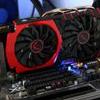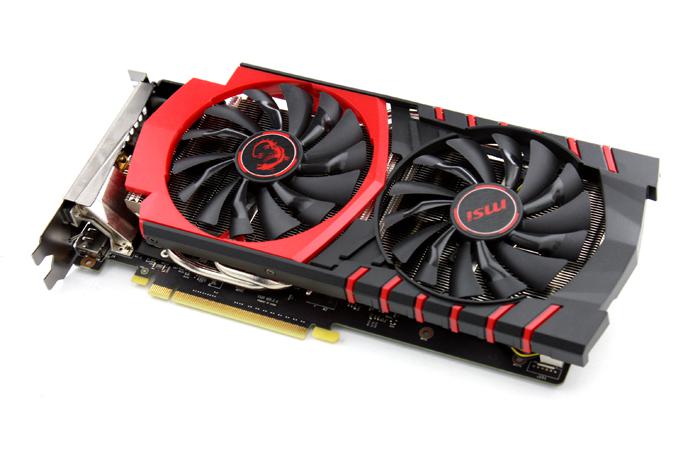Introduction
MSI GeForce GTX 960 Gaming Edition
We review the MSI GeForce GTX Gaming, the card comes with a newly revised TwiNFrozr model cooler. And that makes it silent and deadly as you will not hear this product. The GTX 960 is introduced in the mainstream space, aiming to be the affordable 1080P alternative. The card has 2 GB graphics memory, is energy efficient and comes factory overclocked for you. Let's check it out shall we?
So, it's Nvidia who is releasing the GeForce GTX 960 based products. The GM206 GPU empowering the card has been a topic of much discussion over the past few months, and let's face it... everybody expected this GPU to be based on the GPU being used in the GTX 970 and 980. Then there were delays, and the product got pushed backwards to even after Christmas. Yes, somebody made the decision that the GTX 960 should be a cheaper fab product opposed to using the more expensive GM204 that you know from the GTX 970/980. Nvidia now bakes the GM206 for the GTX 960 series, the product has been castrated and stripped of everything that is sexy with the GTX 970/980. You'll see the memory cut down to 2 GB of memory on these puppies, that memory runs on a 128-bit wide bus, the shader processors have been halved to 1024 Shader/Stream/Cuda cores. Let me quickly table that up for you:
| Model | GeForce GTX 980 | GeForce GTX 970 | GeForce GTX 960 |
| GPU | GM204 | GM204 | GM206 |
| CUDA cores | 2048 | 1664 | 1024 |
| Texture Units | 128 | 104 | 64 |
| Raster Devices | 64 | 64 | 32 |
| Memory Bus | 256-bit | 256-bit | 128-bit |
| Amount of memory | 4 GB GDDR5 | 4 GB GDDR5 | 2 GB GDDR5 |
| Memory Bandwidth | 224 GB/s | 224 GB/s | 112 GB/s |
So yes, you take a GTX 980, chop it in half in every way and that is the GeForce GTX 960. A lot of you guys will feel that this is a bridge too far. Especially the 2 GB and 128-bit wide bus seem to be a nag, then again Maxwell makes efficient use of memory color compression. But hey, you haven't read this review just yet so let's not draw any conclusions right now. However it is abundantly clear that the Geforce GTX is a 1080P card at best with its 2 GB of graphics memory. The new product will be based on Maxwell architecture, yes, named after the mathematical physicist. The Maxwell family of GPUs is actually the 10th generation of GPU architecture for Nvidia. With several design goals in mind (higher performance and lower power consumption) Nvidia was hoping to reach 20 nm by the time their high-end product would be released. It is now January 2015 and it is abundantly clear that the 20 nm fab nodes are a huge yield mess, as no manufacturer dares use it. Nvidia went with plan B and stuck with a 28 nm process, this makes their silicon sizeable, in relative proportions of course. Nonetheless, Nvidia has moved forward and today the 3rd Maxwell based product (GTX 750 was actually the first trial) is being released as a GM206 based GPU. Armed with voltage, power and load limiters, Nvidia these days can harvest massive performance out of chips when you think about it. Today is about the GeForce GTX 960 range of performance. The base clock speed of the GeForce GTX 960 is 1126 MHz. The typical Boost Clock speed is 1178 MHz. The GPU used thus is still on 28 nm.
MSI will offer several GTX 960 models, their trump card however is the Gaming model. Armed with the latest iteration of the TwinFrozr cooler the product not only looks good, but it is silent and cooling extremely well. You may expect load temperatures of up to 65 Degrees C whilst the product remains in-audible. The gaming model are factory overclocked as well, albeit MSI remains to be on the shy side with a 1216 MHz core and 1279 MHz boost frequency. The memory clocks in at a reference value of 7 Gbps. With that dark design and black/red dual fan cooler, the GeForce GTX 960 gaming edition will get all the cooling it needs, and the noise levels are low overall as well.
Have a peek as to what we'll test, meet the MSI Geforce GTX 960 Gaming edition.


